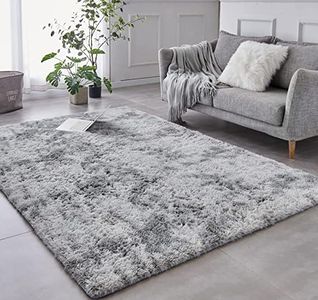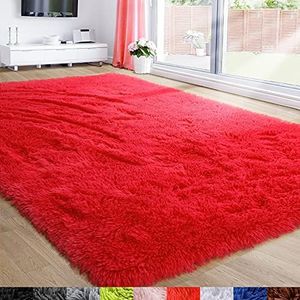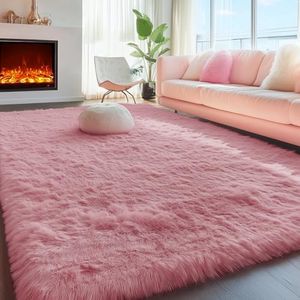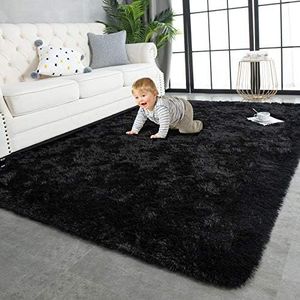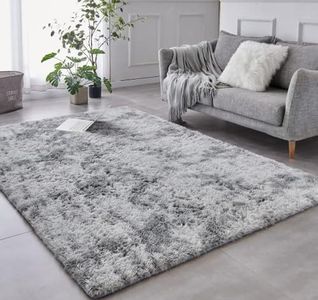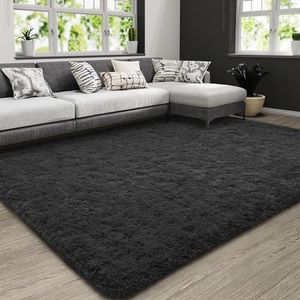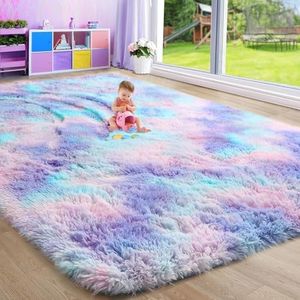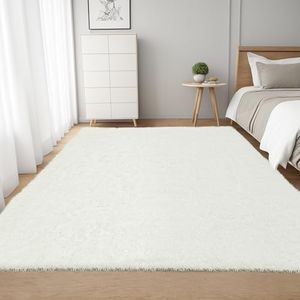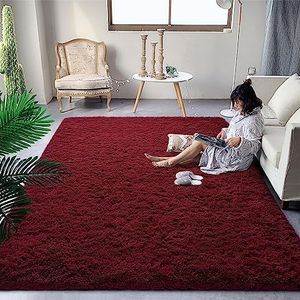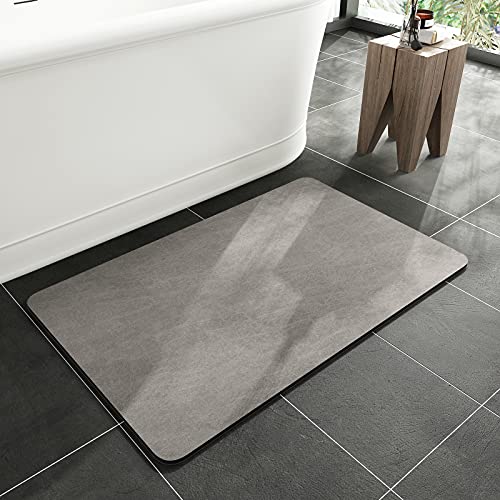We Use CookiesWe use cookies to enhance the security, performance,
functionality and for analytical and promotional activities. By continuing to browse this site you
are agreeing to our privacy policy
10 Best Shag Rugs
From leading brands and best sellers available on the web.Buying Guide for the Best Shag Rugs
Choosing the right shag rug for your home can create a big impact on both comfort and style. Shag rugs are known for their deep, plush pile and cozy feeling underfoot, making them a popular choice for living rooms, bedrooms, and other spaces where comfort matters. When selecting a shag rug, it's important to consider not only the look and feel, but also practical features that match your lifestyle and the room’s needs. Understanding the key specifications will help you find a rug that’s both beautiful and functional.Pile HeightPile height refers to the length of the fibers that make up the surface of the rug. A higher pile means the rug is more fluffy and feels softer underfoot, while a lower pile gives a sleeker look and may be easier to clean. Pile height can be grouped into short, medium, and long piles. Shorter piles (less than 1 inch) are easier to vacuum and maintain, medium piles (1–2 inches) offer a good balance between softness and care, and long piles (over 2 inches) provide maximum plushness but can trap more dirt and require more effort to maintain. If you want a luxurious, cozy feel and don’t mind extra upkeep, go for a longer pile. For high-traffic areas or homes with pets and kids, a medium or short pile is more practical.
MaterialThe material of a shag rug greatly impacts its feel, appearance, and longevity. Common materials include synthetic fibers like polyester and polypropylene, as well as natural fibers like wool. Synthetic fibers are often softer, more stain-resistant, and affordable, making them great for busy spaces. Wool is natural, durable, and offers a more classic look, but may cost more and require special cleaning. Choose synthetic if you need easy maintenance and good durability, especially if there’s a risk of spills or heavy use. Go for wool or other natural fibers if you prioritize eco-friendliness and a traditional, long-lasting option.
Backing TypeBacking is what holds the fibers of the rug together and impacts how the rug stays in place. Backings can be made of latex, cotton, or jute, and some also include anti-slip treatments. Rugs with non-slip or rubberized backing are helpful in preventing movement on smooth floors, which is important in households with kids or older adults. For larger rugs or areas with minimal movement, a simple fabric backing may be sufficient, but you might need a separate rug pad to keep it steady. Think about where the rug will go and whether slip resistance is important for your space.
Ease of CleaningShag rugs can be challenging to clean due to their long fibers, which can trap dust, crumbs, and hair. Some rugs are machine-washable, while others require spot-cleaning or professional cleaning. Thicker, longer pile rugs generally need more frequent deep cleaning. If the rug will be used in a high-traffic area or a household with pets and kids, look for one that’s easy to clean, possibly even machine-washable. For areas with less activity, deep plush rugs that need periodic professional cleaning could be a fine choice.
Size and ShapeThe size and shape of the rug should complement the space where you plan to use it. Rugs come in various shapes (rectangular, round, square) and sizes, ranging from small accent pieces to large area rugs. Larger rugs anchor the room and provide more warmth, while smaller ones can highlight certain areas or furniture. Measure your space before buying to ensure the rug fits well; ideally, furniture like sofas or beds should either sit fully or partially on the rug for a balanced look. Choose the shape and size that matches both your room layout and the vibe you want to achieve.
Color and PatternColor and pattern help define the look and feel of your room. Shag rugs are available in solid colors, subtle shades, or bold patterns. Light colors create an airy, spacious feeling but show dirt more easily, while darker colors can hide stains and add coziness. Patterns can become a statement piece or tie together different elements of your decor. When picking, consider how the rug will interact with your existing furniture and the amount of natural light the room gets. Choose colors and patterns that fit your taste and practical needs for the space.


